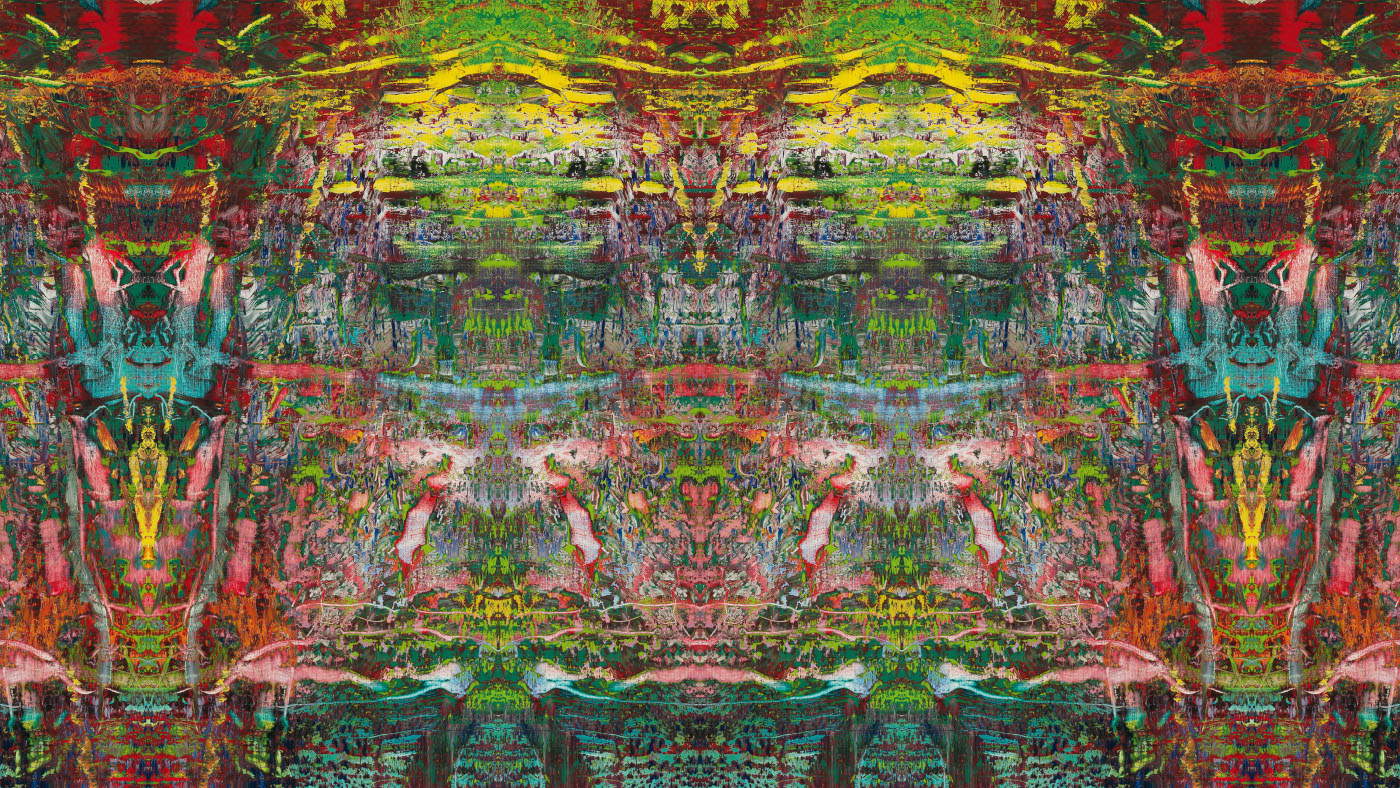At Gagosian gallery in Rome, Gerhard Richter's immersive sound and visual installation
From Dec. 6, 2024 to Feb. 1, 2025, the Gagosian Gallery in Rome presents Moving Picture (946-3) Kyoto Version (2019-24), an immersive sound and visual installation by Gerhard Richter (Dresden, 1932) that will entirely occupy the gallery’s Rome location. This is the first time the work has been exhibited in a gallery and marks the artist’s return to an Italian gallery after 40 years. The work represents the culmination of the Strip project, initiated by Richter in 2010, when the artist began exploring new artistic possibilities with the use of digital tools.
The Strip series began when the artist began digitally fragmenting the photographic image of a canvas into smaller and smaller portions, which were then doubled or mirrored on particularly large surfaces. The process resulted in works such as the Strip paintings produced from 2011 to 2016, as well as prints, books, tapestries, and the recent monumental sculpture STRIP-TOWER of 2023, currently on view at the Serpentine in London.
In Moving Picture (946-3) Kyoto Version, Richter collaborated with Corinna Belz to create a film, projected on a monumental scale over 22 meters in length and accompanied by a trumpet score composed by Rebecca Saunders and played by Marco Blaauw, diffused through six amplifiers that envelop the audience in a powerful, enveloping sound experience. Richter has previously experimented with the link between sound and image in immersive installations, including those at the Manchester International Festival (2015, with Arvo Pärt) and at The Shed in New York (2019, with Pärt and Steve Reich).
Throughout his career, the artist has constantly renewed the pictorial language by exploring the potential of photography, randomness and modular systems, all essential elements in Moving Picture. As early as the 1960s, he used magazine photographs as reference images for his works; in the 1970s, he enlarged fragments of his brushstrokes to explore their details. He then found new possibilities in the randomness of color grids, from the Color Charts of the 1960s to 4900 Colors of 2007 to Cologne Cathedral Window of 2007. Similarly to the latter, Moving Picture is a work made of light that celebrates the beauty of chance.
Notes on the artist
Gerhard Richter was born in Dresden in 1932, and currently lives and works in Cologne. His works can be found in various museum collections around the world. Major solo exhibitions include: Forty Years of Painting, Museum of Modern Art, New York (2002, then at the Art Institute of Chicago; San Francisco Museum of Modern Art and Hirshhorn Museum and Sculpture Garden, Washington, DC); Portraits, National Portrait Gallery, London (2009); Panorama, Tate Modern, London (2011-12, then at Neue Nationalgalerie, Berlin and Centre Pompidou, Paris); ATLAS, Kunsthalle im Lipsiusbau, Dresden, Germany (2012); Drawings and Watercolors 1957-2008, Musée du Louvre, Paris (2012); Streifen & Glas, Galerie Neue Meister, Albertinum, Staatliche Kunstsammlungen Dresden, Germany (2013-14, then at Kunst Museum Winterthur, Switzerland); Fondation Beyeler, Riehen/Basel (2014); Birkenau, Museum Frieder Burda, Baden-Baden, Germany (2016); New Paintings, Museum Ludwig, Cologne, Germany (2017); National Gallery, Prague (2017); The Life of Images, Queensland Art Gallery | Gallery of Modern Art, Brisbane, Australia (2017-18); Over Schilderen, Stedelijk Museum voor Actuele Kunst, Ghent, Belgium (2017); Abstraktion, Museum Barberini, Potsdam, Germany (2018); Seascapes, Guggenheim Bilbao, Spain (2019); Painting After All, Metropolitan Museum of Art, New York (2020) 00 Selbstbildnisse, Kunst Museum Winterthur, Switzerland (2020); National Museum of Modern Art, Tokyo (2022); 100 Works for Berlin, Neue Nationalgalerie, Berlin (2023-26); and Hidden Gems. Works from Rhenish Private Collections, Kunstpalast Düsseldorf, Germany (2024-25).
Image: Gerhard Richter, Moving Picture (946-3) Kyoto Version, 2019-24 (still image), digital projection (color, sound, 36 min.) © Gerhard Richter 2024
 |
| At Gagosian gallery in Rome, Gerhard Richter's immersive sound and visual installation |
Warning: the translation into English of the original Italian article was created using automatic tools. We undertake to review all articles, but we do not guarantee the total absence of inaccuracies in the translation due to the program. You can find the original by clicking on the ITA button. If you find any mistake,please contact us.





























